How GT1 took 30 leftover Ford GT chassis and made a 1400-hp monster
Fred Calero has a knack for pulling the right pieces together. In 2019, he purchased the remaining 30 chassis of Ford’s retro-inspired 2005–06 GT supercar. The goal? To create a limited-production track monster that melds legendary heritage, racing technology, and design artistry. That would be a considerable feat even for a full-suite automaker, but it’s especially notable for the team of just four core individuals that Calero assembled to make the GT1 hypercar a reality. Based on the thundering example that is streaking past me at Pontiac, Michigan’s M1 Concourse racetrack, they’ve concocted—and refined—a potent potion.
On paper the GT1 seems downright hyperbolic: a claimed 1400 horsepower on 93 octane from a Roush-Yates 427-cubic-inch, twin-turbo V-8, backed by a sequential six-speed transmission. Aircraft-grade, thick-weave carbon-fiber body panels. Aero and chassis design rooted in European GT3 competition. Meticulous tuning by an engineer who helped develop the original ’05 Ford GT. You’d be forgiven for uttering any flavor of exclamations when you lay eyes on the car in person—squat, muscular, and bewinged, with enough cooling ducts and vents for a Category-Four hurricane to flow neatly across its flanks. Every element of the GT1, which starts at $1.3M, declares its sense of purpose.
Calero is cut from a similarly focused cloth. Within minutes of greeting me at his M1 Concourse private garage he has slipped into his driver’s suit, ready to hit the track. His demonstration laps will double as a round of data collection; his team take every opportunity to learn, iterate, and improve. We walk over to GT1 as Ricky Johnson and Jeremy Sutton, two of the car’s engineers, prepare it for the boss’s 9:00 a.m. session.
Johnson presses the start button. The RY45 engine—so named for its 4.5-inch bore spacing—barks to life, settling into a bassy, energetic idle. When the car has warmed up, Calero hops in the driver’s seat and Johnson gets in next to him, the latter busy preparing a device to remotely relay the car’s onboard telemetry–in real time—to their engine tuner. The two make their way on track while Sutton and I seek out a good vantage point.
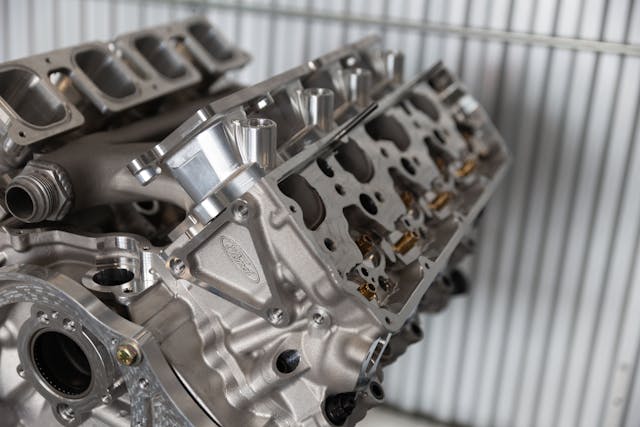
“427 cubic inches was a magic number for us,” says Sutton, raising his voice as the Doppler effect of the approaching GT1 bounces off the row of trackside garages. “It was important for us to pay homage to the GT40. And to have a powerplant that matched the personality of the rest of the car.”
Big displacement doesn’t stop the aluminum RY45 from winding out—the heads will happily flow to 10,000 rpm, according to Sutton, but the team settled on a (still-stratospheric) 9000-rpm fuel cutoff to ensure longevity. The result, aside from superlative power output, is a brash American V-8 wail that would be right at home at Daytona.

Racing-influenced, brawny carbon-fiber beasts are familiar territory for Sutton. “I was the only Yank, as the Brits called me, at TVR,” he says, recounting his work on the bonkers 800-hp Cerbera Speed 12 race car. Sutton’s no stranger to fast Fords, either. He spent time under John Coletti at Ford’s Special Vehicle Team, working on the SVT Focus and Terminator Mustang Cobra in the early 2000s, right around when the GT was under development. Now, two decades later, the GT1 project might not exist without Sutton’s suggestion to Calero that there was a business case for an exclusive, GT-based track car riding on the 30 unused chassis. In addition to engineering and management, Sutton tends to marketing and customer-facing activities.
It all started with a 2019 post on FordGTForum.com. Ford Performance was unloading the 30 remaining GT chassis, which it had in storage. Calero, an avid track rat and owner of an ’05 and ’17 GT, geeked out at the possibilities. Sutton’s notion of a dedicated track machine seemed compelling, as were his suggestions that others might also be interested in the concept. “I listened to him, we bought the chassis, and, ‘Here we go! I’ve accidentally started a car company,’” Calero says.
He’s being a bit tongue-in-cheek, as I soon gather that Calero doesn’t do much by accident. He recognizes that the GT1 is a huge financial and logistical undertaking, a full-time job that requires total attention. A successful entrepreneur in medical tech and other fields, Calero seems to possess the rare capacity to be aware of what he knows, what he doesn’t, and how to fill that vacuum. He methodically recounts how the team knocked down each step in the creation of the GT1.
Calero found the body molds not far away in southern Michigan, built by Matech—the race team that campaigned the GT in European GT3 racing in 2010. “I discovered that a friend of mine had purchased the Matech race cars, so I asked if we could utilize some components to help engineer our car,” says Calero. “He told us to come on over and offered a container full of spares that we’ve since used to help develop the car.” Suddenly Calero had not just the chassis, but almost everything he’d need to body them.

Back on track, Calero ups his pace, coursing through the long right-hander by the start/finish line with increased urgency. I ask Sutton, the engineer, how the GT1 team adapted to the advancements in tire and damping technology since the chassis debuted almost twenty years ago. “The suspension is one of the many places where Jim Dunham comes in,” he explains.
Dunham, the fourth member of the team, is mentioned frequently and with reverence on the day of my visit. The team isn’t much for labels, but the other members consider him the chief engineer for the GT1. Among many projects during Dunham’s 32 years at Ford, he served as a development engineer on the ’05–06 GT. The man has probably forgotten more than most people will ever know about this chassis.
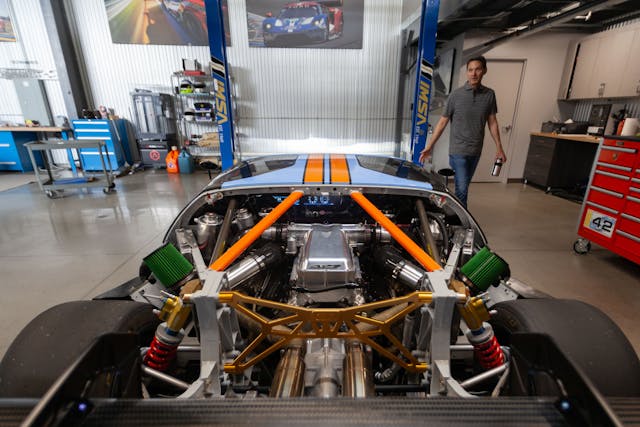
“Jim did all the work on the engineering of the kinematics and the suspension geometry for the GT1,” says Sutton. “We used a lot of Matech’s hard points, but we had to bring the front track out significantly to get the dynamics right.”
Developing suspension components to these specifications was possible through generative design—a computer-driven iterative process that yields lightweight, ultra-strong results. Including the suspension bits, there are over 300 custom-designed billet parts on the GT1.

Calero wraps his session after about 20 minutes and drives back to the garage, where I can take a closer look. The GT1’s body manages to span several eras: the ’05 GT’s overall design and styling cues are unmistakable; the body panels from the Matech GT3 molds, paired with revised aerodynamic elements, recall purpose-driven upgrades suitable for racing in the early 2010s; and the exposed carbon-fiber weave seems very much to today’s hypercar taste.
It has taken a lot of work to get the GT1 to this point. Creating a car like this, not to mention 30 of them, is especially remarkable because it is Calero’s first professional automotive endeavor. Given the way he seems to be navigating such a complex process, you’d think it was old hat for him.
Calero has attracted suppliers who are eager to see this project succeed, recognizing that a boutique firm requires something not readily available off the shelf. “AP Racing, our brake supplier, came in with a host of questions to custom-tailor their setup,” Calero says. “Next thing you know, they’ve sent an engineer out here to help with brake bias and coach us on fine-tuning. It’s similar with Haltech, our engine management system supplier. Ricky’s constantly working with them on the latest data, as you saw this morning.”
There have been challenges, of course, but Calero doesn’t dwell on them. He is candid about bumps in the road but quick to emphasize the solutions and affirm credit where it’s due. As if on cue, Calero turns to Johnson and highlights his work.
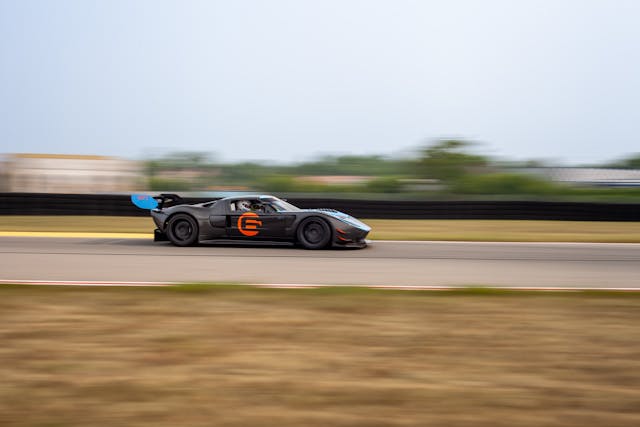
“Ricky wears so many hats,” says Calero. “Wrenching, interacting with all the suppliers, reporting any necessary fixes—he does so much of our heavy lifting.” The youngest member of the team, at 25 years old, Johnson was nonetheless critical in addressing development hurdles with everything from transmission shift electronics to custom wiring-harness fabrication.
There are still adjustments to be made. But with the right people, parts, and suppliers finally in place, the GT1 team is committing to a timetable for customer deliveries. The plan is to build four cars this year. “Doing it right is more important than doing it fast,” explains Calero. “Over-subscribing to ten or 15 cars puts the priority on delivery over quality.” One customer, Calero shares, was visiting the shop on the day before my visit for a seat fitting and to discuss materials.
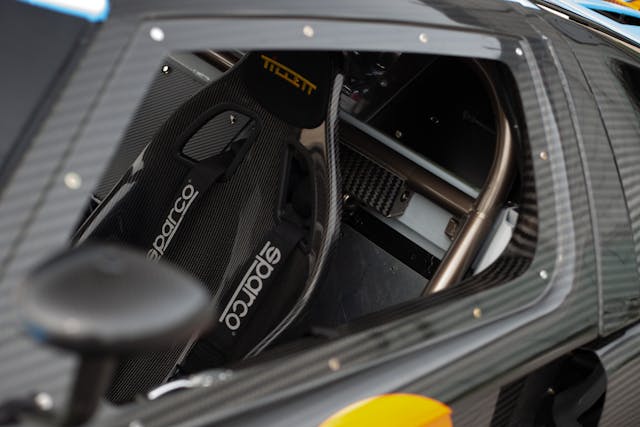
Visitors to The Amelia in March 2023 may have been captivated by the Gulf-style, blue-over-carbon test car on the concours lawn, but the customer example I pore over at M1 Concourse is perhaps even more stunning. The sumptuous, Pagani red tint finish has just arrived back from the painter and, Calero says, more accurately represents the finished product buyers can expect. The visual hits are set to keep coming; a one-off livery created by Camilo Pardo, the chief designer who penned the 2005 GT, is set for reveal this month at Monterey Car Week.
It will be tempting to assess the GT1 in that rarified context, among other boutique builds of the world’s most exclusive automobiles. Porsche “reimaginations” like those of Singer and Gunther Werks come to mind, though Calero draws a distinction from such outfits. “We didn’t take an old car and make it more modern,” he says, arguing that the GT1 is about taking the original concept much further. “Someone I showed it to called it a hyper-classic,” says Calero. “I think that fits.”
***
Check out the Hagerty Media homepage so you don’t miss a single story, or better yet, bookmark it. To get our best stories delivered right to your inbox, subscribe to our newsletters.

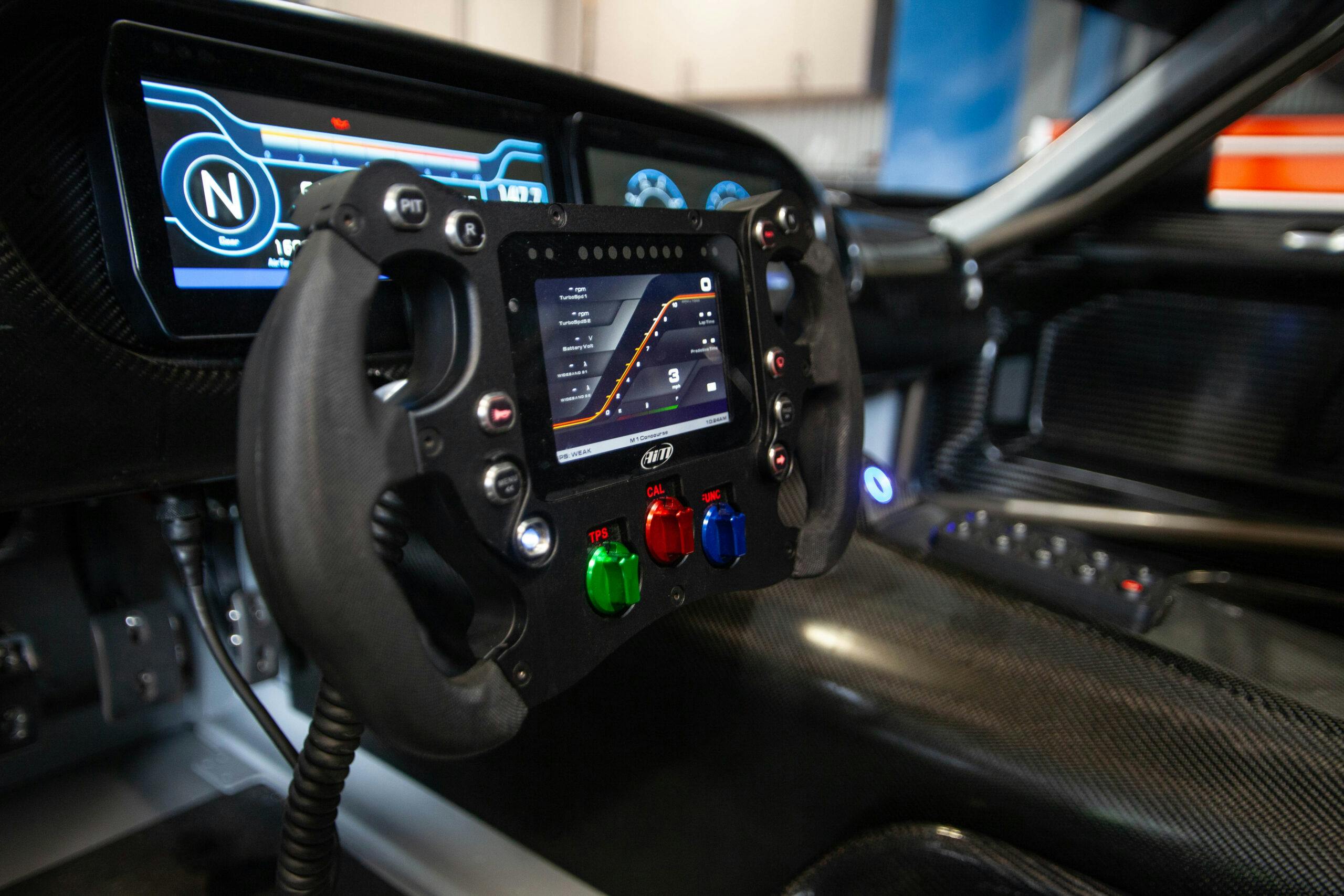



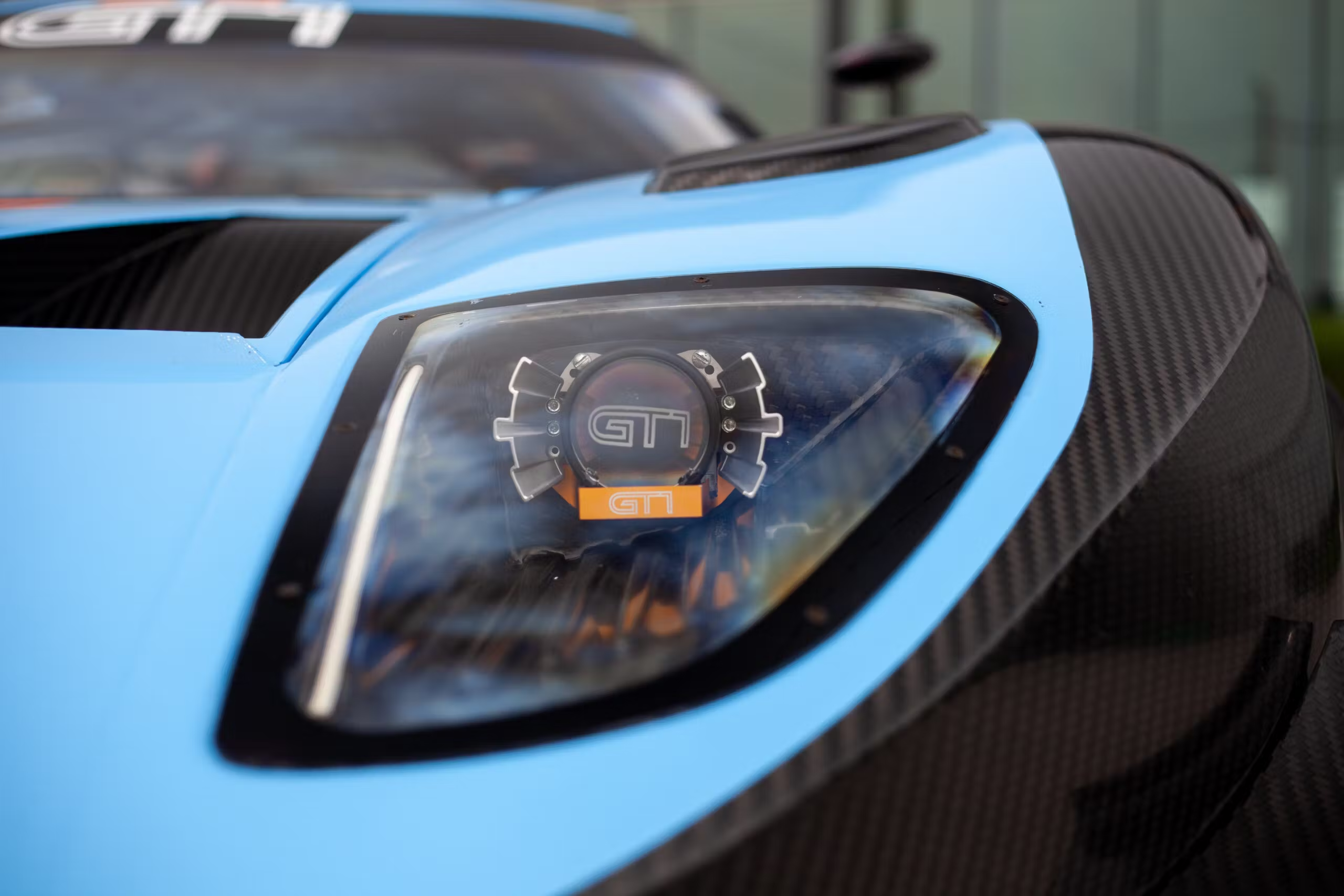












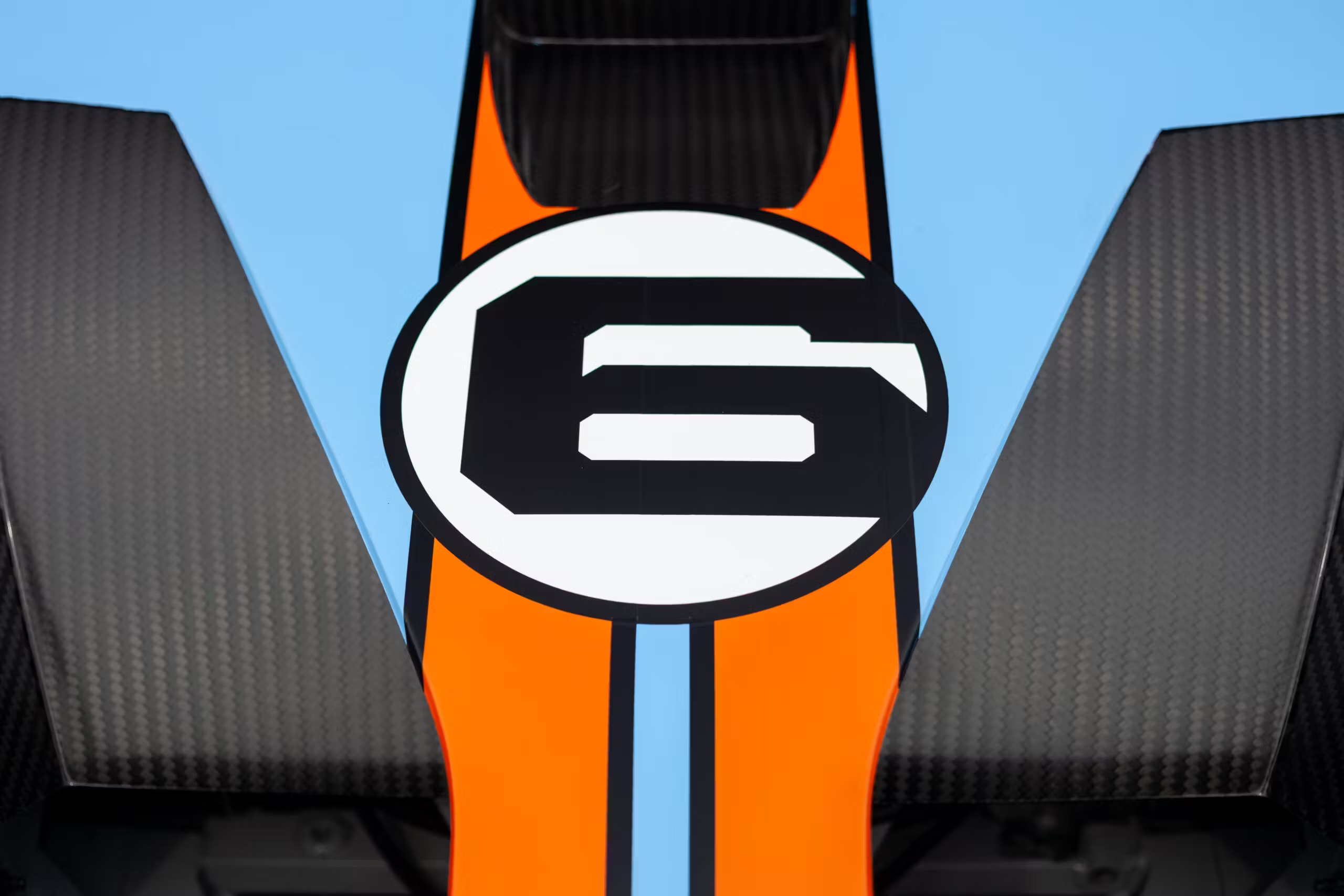


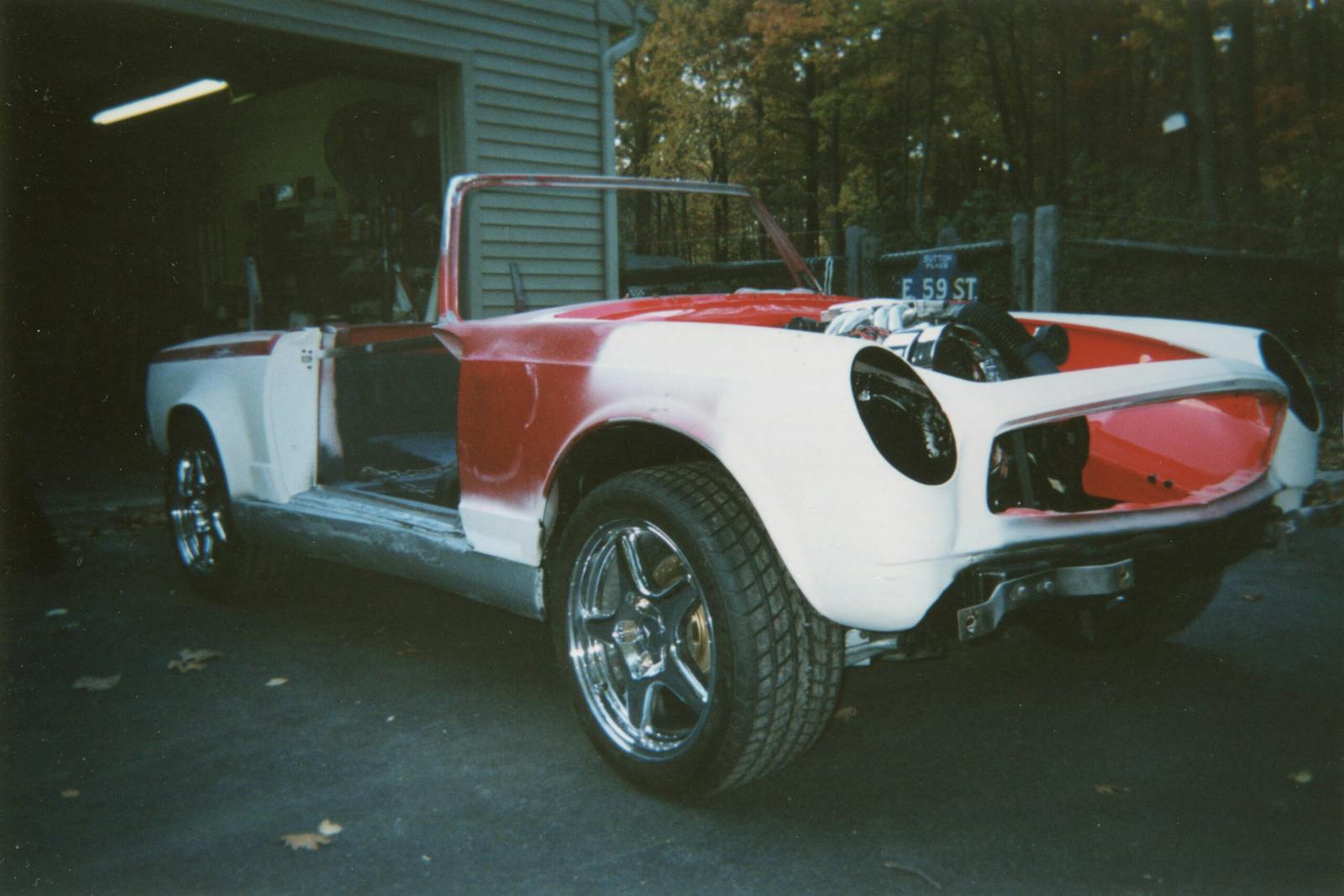

Neat idea. Bold endeavor. Good article. Wish ’em success. Outta my league.
A new Ford GT with a V8 as it should be. I do like the TT V6 GT but I wish it had a V8.